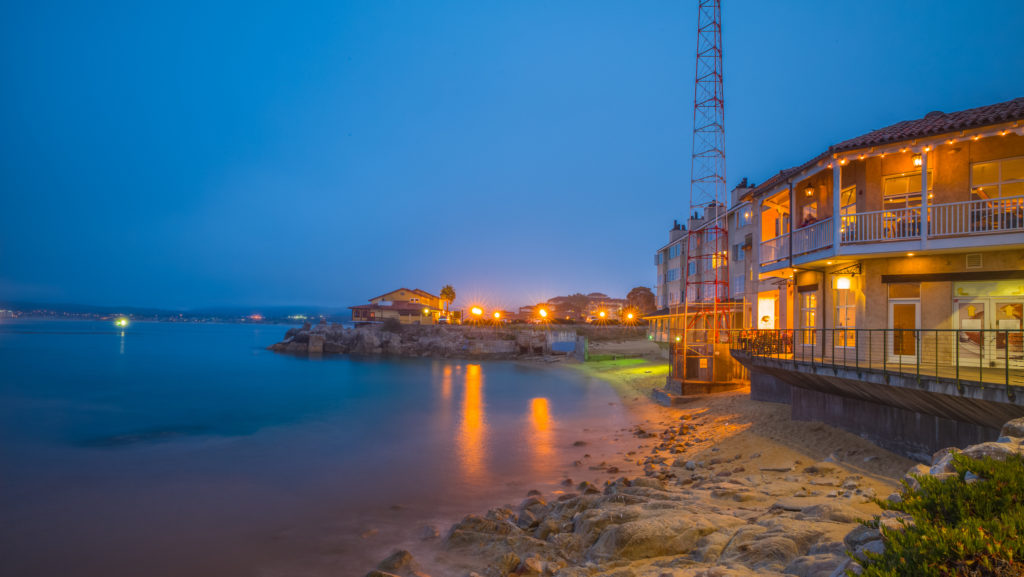“California is a place in which a boom mentality and a sense of Chekhovian loss meet in uneasy suspension.” — Joan Didion, “Notes from a Native Daughter,” 1965
John Steinbeck’s 1945 novel of the Central Coast, “Cannery Row,” begins like this: “Cannery Row in Monterey in California is a poem, a stink, a grating noise, a quality of light, a tone, a habit, a nostalgia, a dream.”
It’s also a close-knit, if volatile, community. The sardine factories around where the neighborhood clusters and where many work are barely mentioned. The real life of the Row takes place after hours, at dusk, dawn, the dead of night, and during hard-drinking, lazy afternoons.
Doc, an enigmatic book-and-jazz-lover and the community’s moral backbone, runs Western Biological, a DIY lab of dead animal specimens — sea creatures, spiders, rattlesnakes, rats — out of a ramshackle old warehouse.
Lee Chong, the laconic and indispensable owner of the local grocery store, sells beer and food on an arcane system of ever-revolving credit.
The Bear Trap, a house of prostitution, is run by “a great big woman with flaming orange hair and a taste for Nile green evening dresses” named Dora.
The Palace Flophouse is a squat occupied by a gang of hard-drinking idlers who can’t much be trusted but are tolerated, accommodated, and in their way, loved.
Among sea mists and the smell of wild fennel, people go on tide pool field trips for starfish and crabs, fight, get carted off to jail and psych wards, commit suicide, throw parties that devolve into bedlam, then are forgiven. They pursue private obsessions, take their lumps, puzzle out the meaning of existence.
Cannery Row is a microcosm of existence: mine and yours. The whole novel could be said to take place in “the hour of pearl — the interval between day and night when time stops and examines itself.”
Raymond Chandler (1888-1959), widely considered a master of noir fiction, created the hard-boiled LA private eye Philip Marlowe.
In his essay, “The Simple Art of Murder,” he famously wrote: “Down these mean streets a man must go who is not himself mean, who is neither tarnished nor afraid. He is the hero; he is everything. … He must be … a man of honor — by instinct, by inevitability, without thought of it, and certainly without saying it.”
Marlowe is realistic but never cynical. He knows the feel, the smell, the pulse, the dirty corners, and the unconfessed sins of LA. Plot is not Chandler’s strong point — I almost always get lost — but it doesn’t really matter.
You read Chandler for the characters: heroin-using Filipino houseboys, nymphomaniac heiresses, corrupt politicians, jewel thieves, fortune-tellers, thugs, pimps.
You read Chandler for the style, the dialogue, the kick:
“I felt like an amputated leg.”
“It was a blonde. A blonde to make a bishop kick a hole in a stained-glass window.”
“Tall, aren’t you?” she said. “I didn’t mean to be.”
You’ll get to “The Big Sleep” (1939), “Farewell, My Lovely” (1940), “The Lady in the Lake” (1943). But why not start with his 1938 novella “Red Wind?”
“There was a desert wind blowing that night. It was one of those hot dry Santa Ana’s that come down through the mountain passes and curl your hair and make your nerves jump and your skin itch. On nights like that every booze party ends in a fight. Meek little wives feel the edge of the carving knife and study their husbands’ necks.”
LA’s own Charles Bukowski (1920-1994), poet of “dirty realism” and beloved by hipsters the world over, acknowledged novelist John Fante as a premier influence.
Arturo Bandini, the protagonist of “Ask the Dust” and Fante’s alter ego, is an aspiring writer who lives in a flophouse in downtown LA’s now demolished Bunker Hill.
Perpetually broke, Bandini chats up the waitress at a local cafe and falls fatally in love. Camilla is unfortunately in love with Sammy, who treats her like dirt and moves out to a shack in the Mojave Desert. Bandini sells a novel. Camilla says it’s crap. After a showdown among the three of them at the shack, she disappears on foot into the cacti. Bandini hurls a copy of his book after her into the ether above the hills — then returns to LA to write more.
We’re used to stream-of-consciousness, down-and-dirty lowlifes today, whether in fiction or memoir, but in its day, “Ask the Dust” broke the mold. And if the characters are broadly drawn, the book has some lovely bits: “I gave up cigarets for a few days. I bought a new rosary. I poured nickels and dimes into the Poor Box. I pitied the world.”
Nathanael West’s “Day of the Locust” is a borderline surreal, apocalyptic novel about the people who come to LA to die — while frantically chasing the illusion of new life. These stock figures are familiar and yet unfamiliar: exaggerated, grotesque even, and yet recognizable as people you maybe met, sometime, at a party.
The gorgeous but talentless starlet; the feckless father, a former vaudevillian who can’t stop pulling corny gags; the disillusioned East Coast art school graduate earning minimum wage doing film sets; the fake cowboy; the gigolo Mexican. Its dreamlike, propulsive plot, overlain by a sense of menace, ends with a film premiere riot at a Hollywood theater (read Graumann’s Chinese) and the protagonist’s psychotic break — or maybe, after all, it’s an epiphany.
West was an eccentric and a huge boozer. He died at 37 when, en route back to LA from a trip to Mexicali, he ran a stop sign near the Salton Sea and caused an accident which killed him and his young wife.
He achieved posthumous semi-cult fame and “The Day of the Locust” was later made into a movie.
That’s a story with California written all over it.

